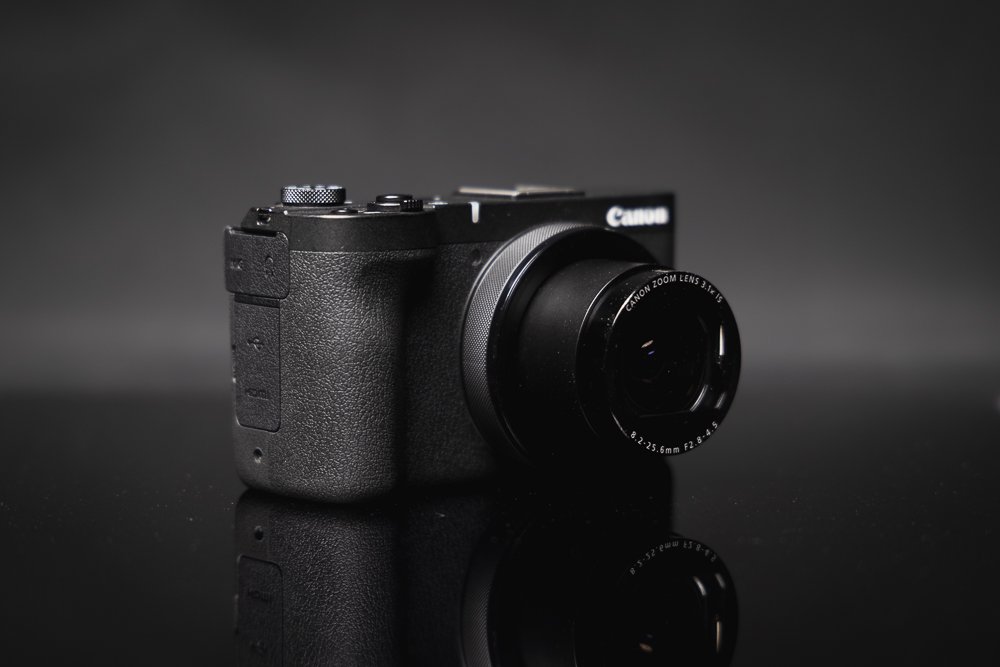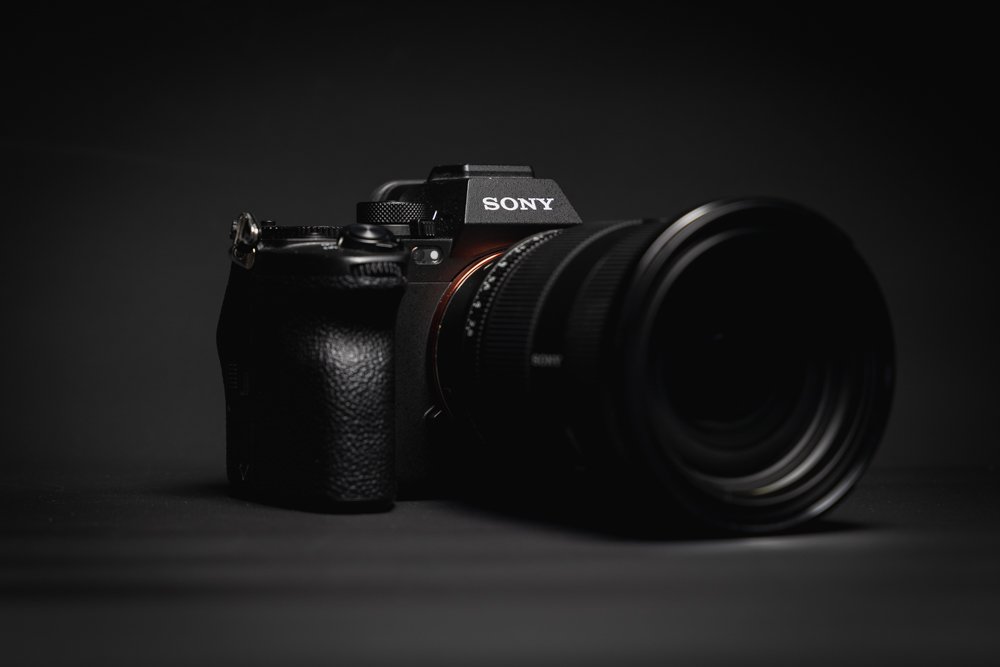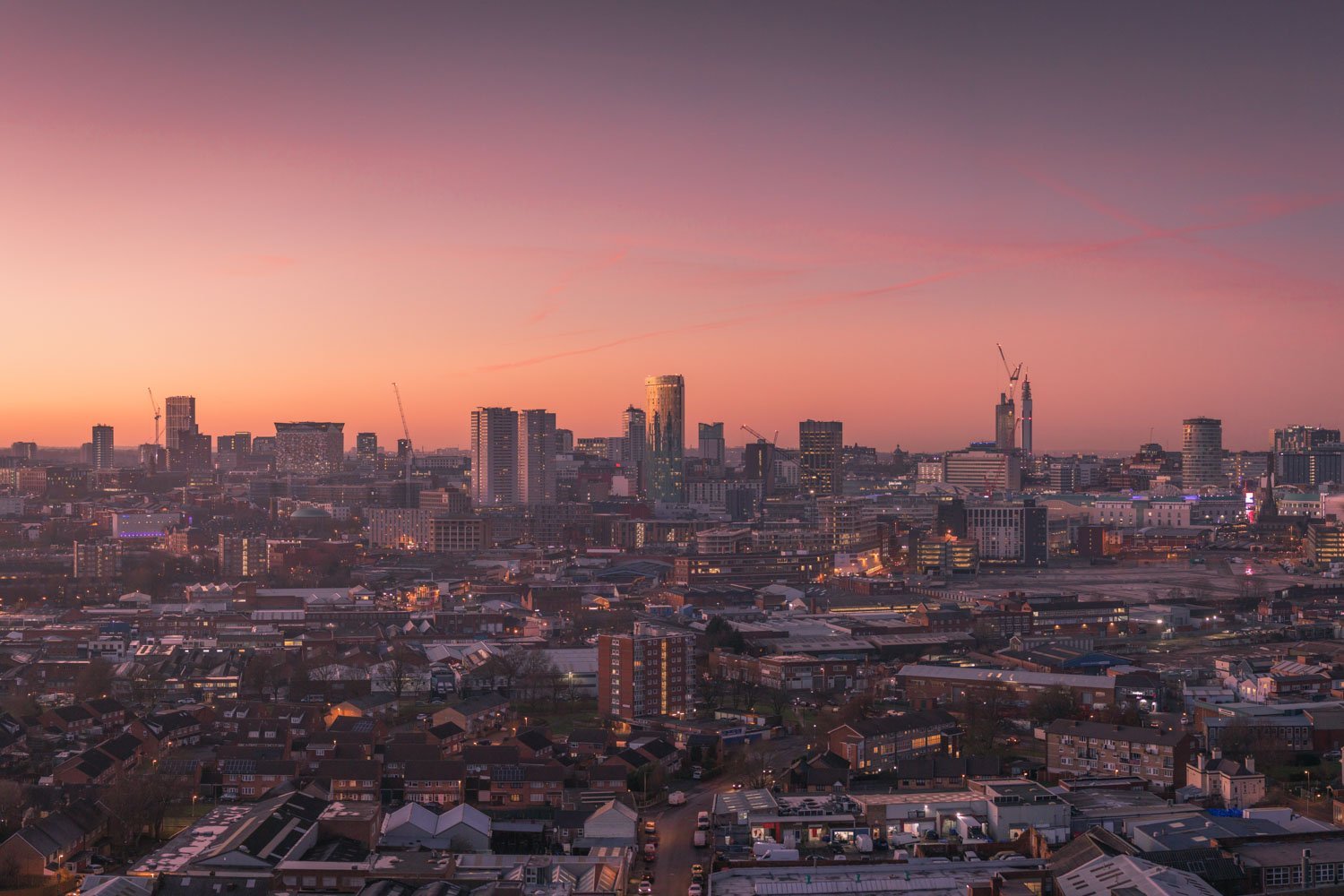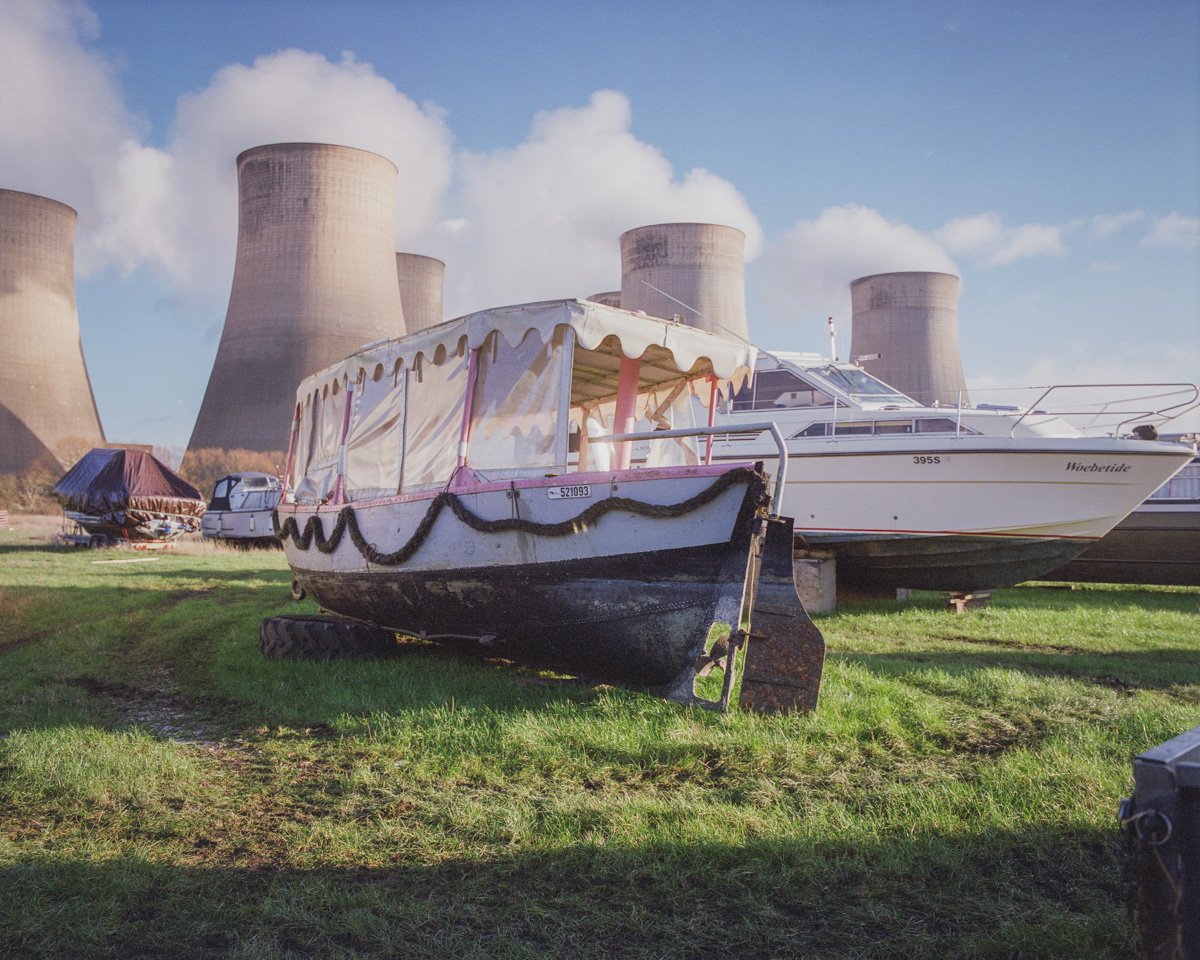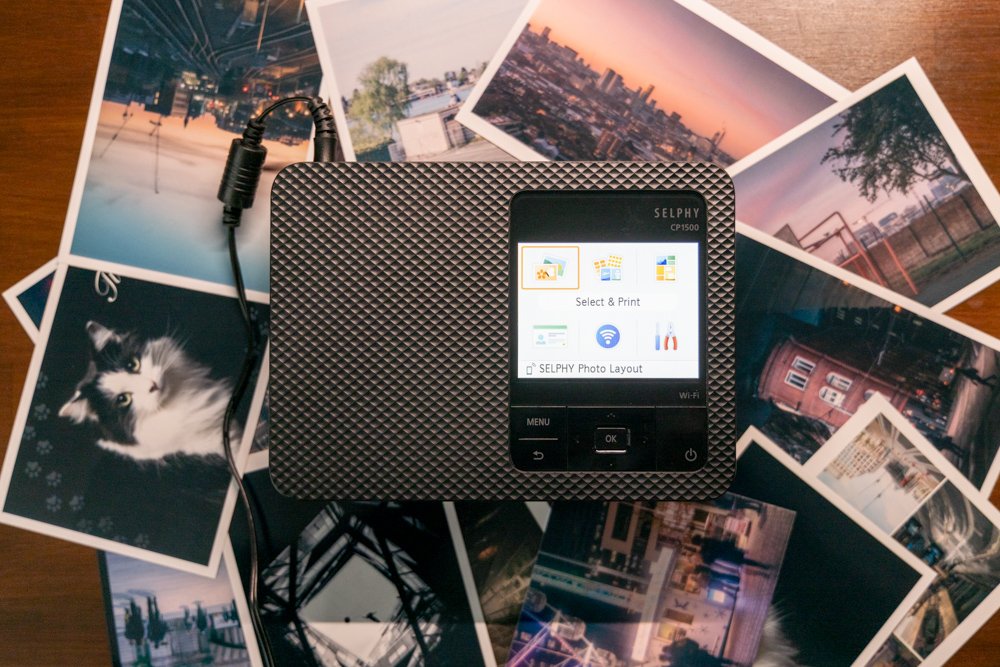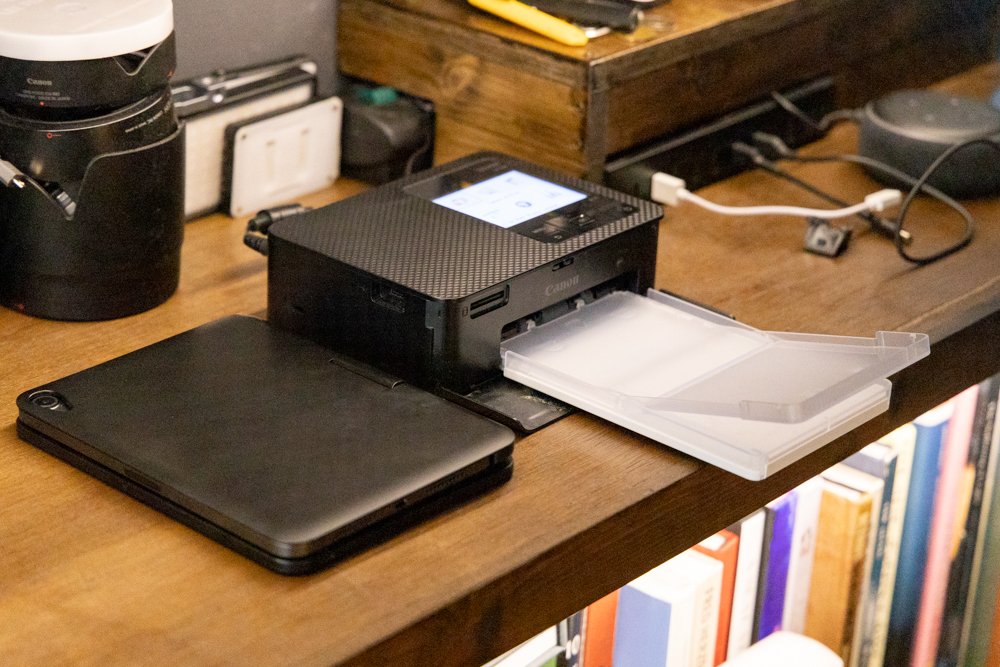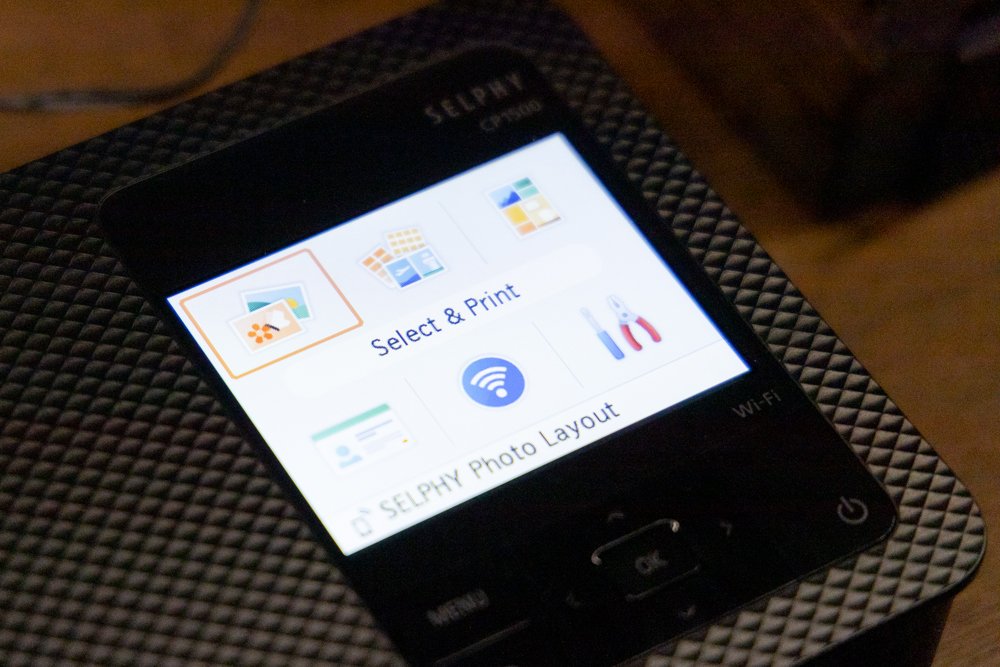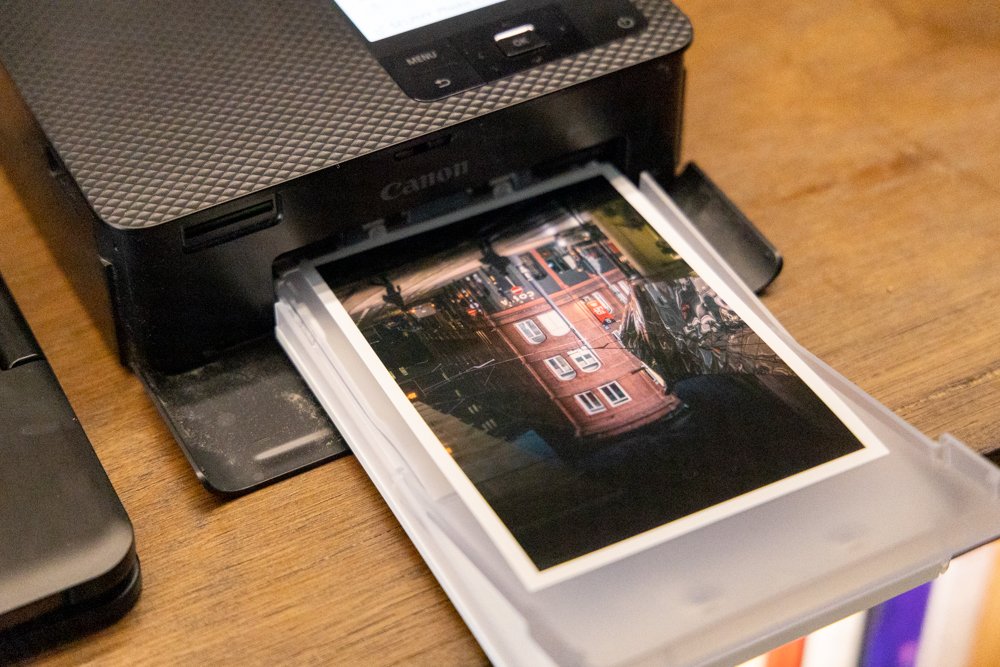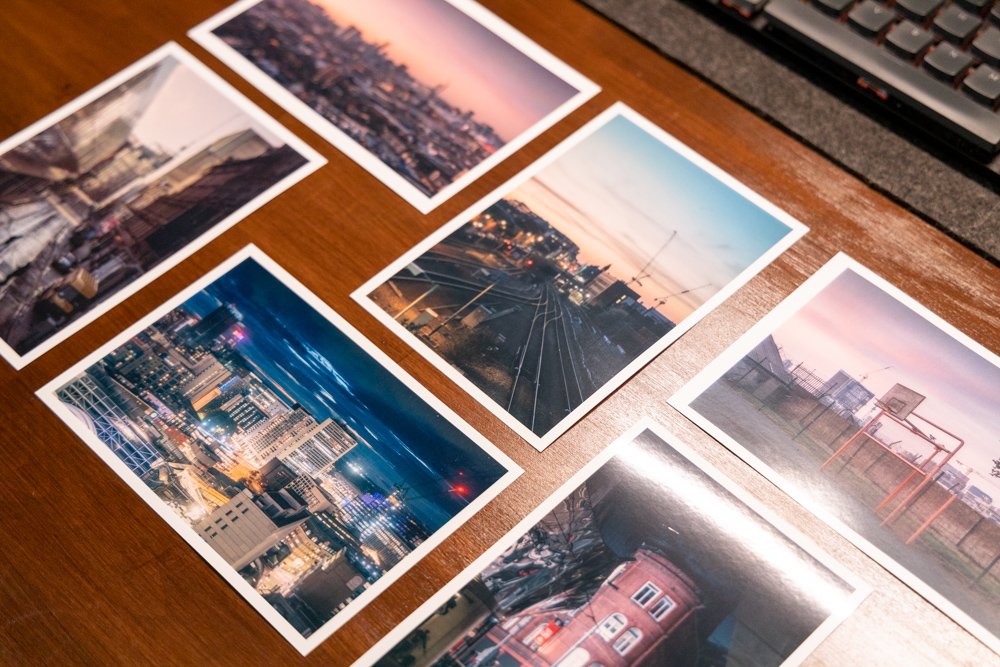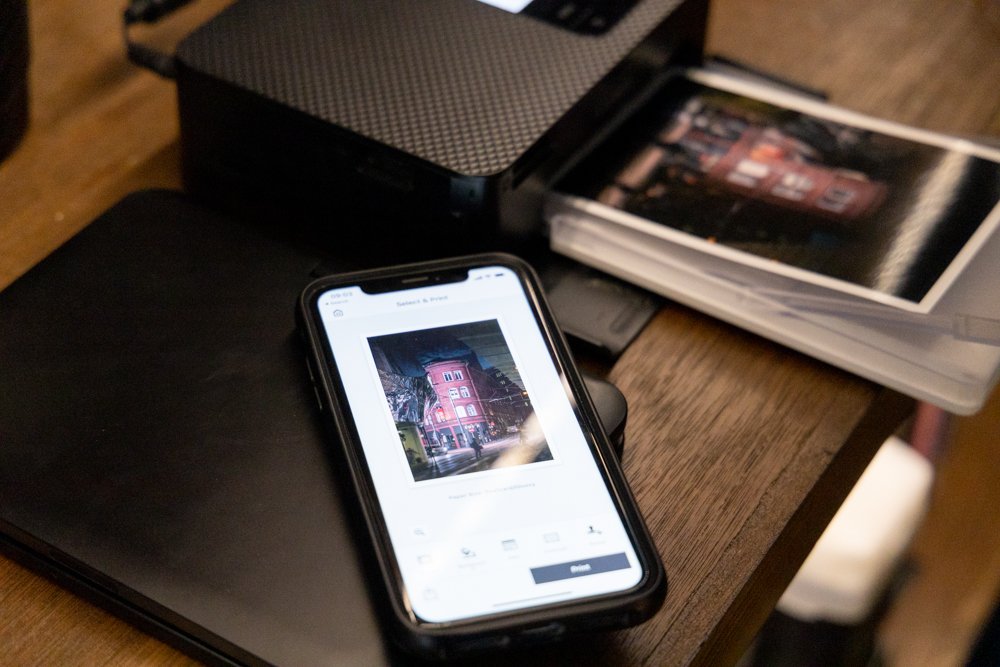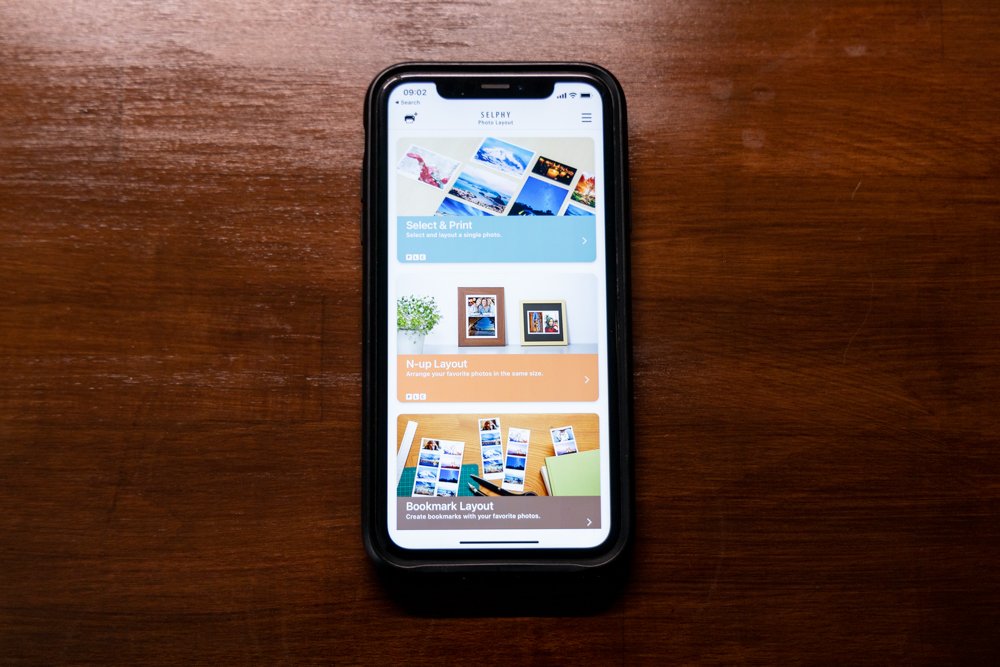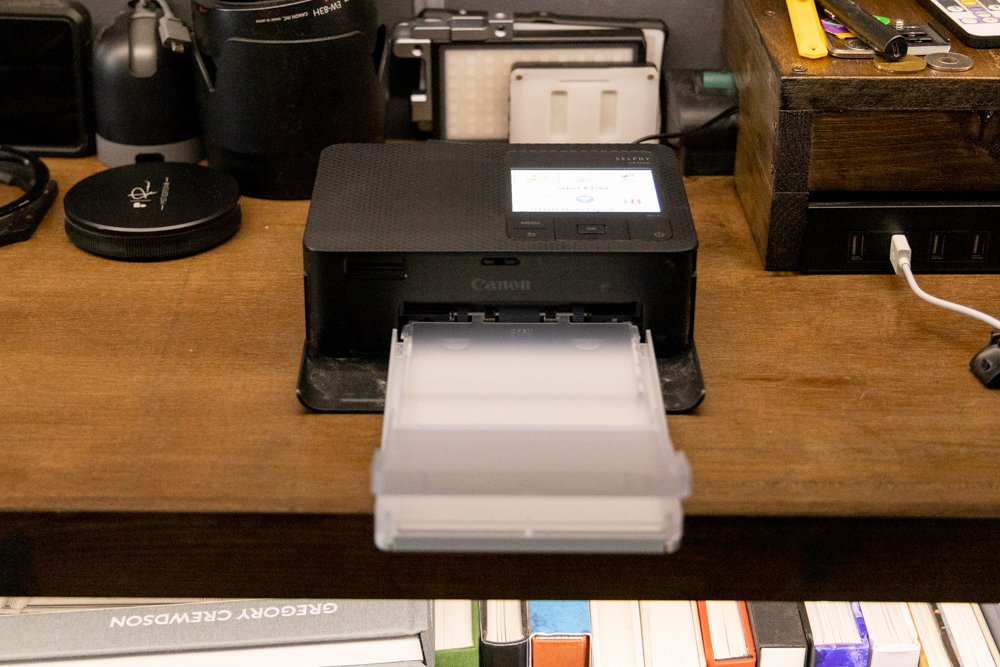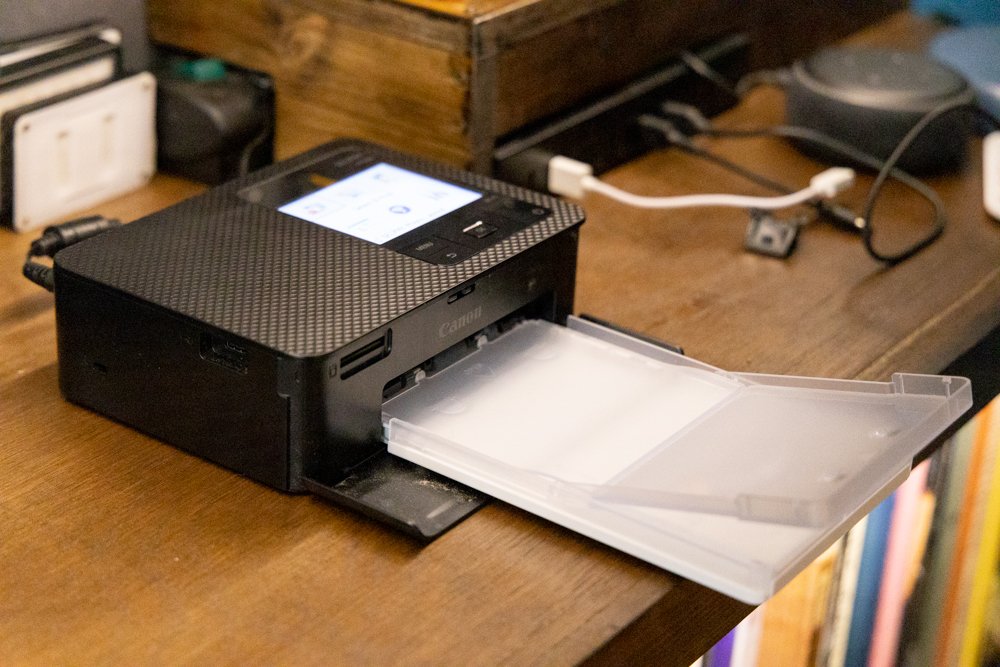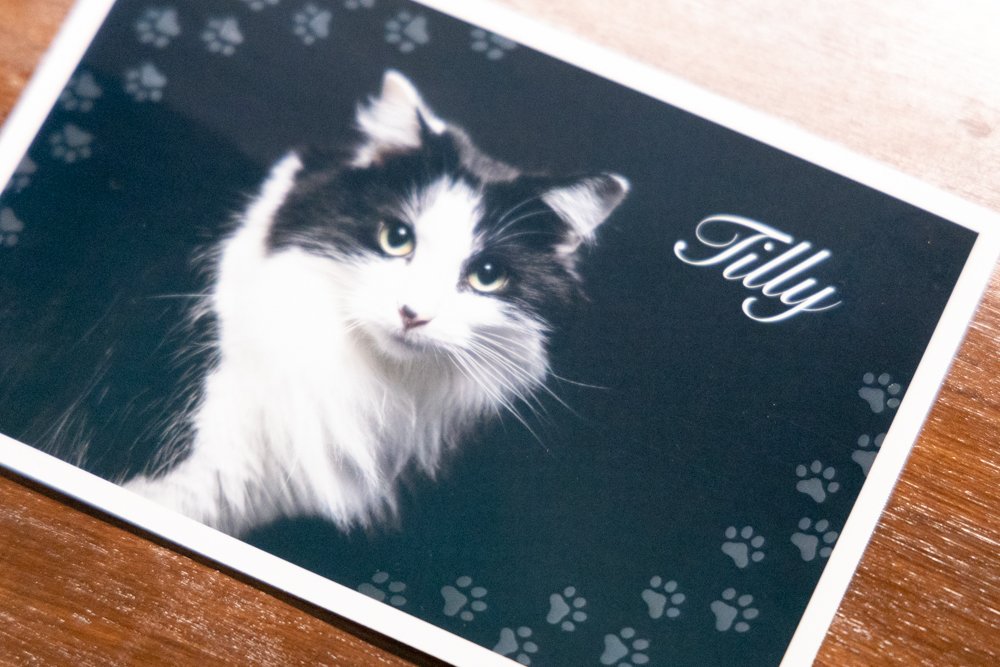Canon PowerShot V1 Review - Compact Power in your Pocket
When I started out, over 15 years ago, I would never have believed all of the features that we take for granted in a consumer level camera. Incredible autofocus, high resolution stills, 4k video with effective wide-dynamic range (Log) - With the Canon PowerShot V1 launched in April 2025, we now have all of that and much more in our pocket. When I think about it, it really is mind blowing. However, it does all come at a cost, let's find out if it’s worth it… Oh, and I will have a video review coming soon so be sure to check out my YouTube Channel…
When I started out, over 15 years ago, I would never have believed all of the features that we take for granted in a consumer level camera. Incredible autofocus, high resolution stills, 4k video with effective wide-dynamic range (Log) - With the Canon PowerShot V1 launched in April 2025, we now have all of that and much more in our pocket. When I think about it, it really is mind blowing. However, it does all come at a cost, let's find out if it’s worth it… Oh, and I will have a video review coming soon so be sure to check out my YouTube Channel…
TL;DR
If you don’t have time to read the full article, my ‘Too Long; Didn’t Read’ take on this is…
The Canon Powershot V1 is an excellent compact camera. Yes, it has a premium price tag but it is an incredibly capable little camera. Whereas some of it’s counterparts make up for their high price tags by offering a myriad of features and specs, the Canon is simple to use yet powerful enough to get great results in an all but the most challenging scenarios. It’s a great stills camera but for a vlogging/content creator, the video features make this camera a ‘no-brainer’…
PLEASE NOTE - No AI was used to make this article. It is my own work based on my experiences and created in my own time. If payment was received or any items gifted to me, it will be clearly stated in the article. If you would like to support the blog, please consider making a small donation.
Build Quality and Ergonomics
Straight out of the box (and I’m pleased to see Canon using mostly recycled packaging for their cameras) the camera feels like a premium camera. It has a little weight to it and feels dense - though at 426 grams, it’s certainly not heavy. That dense feel makes sense when you think of all of the technology crammed inside this thing! The package comes with a battery and wind cover for the mic, this camera is certainly targeted towards vloggers after all.
Ergonomics
The ergonomics of the camera are another standout feature. Can have somehow managed to make this feature packed camera incredibly simple to handle and use. I’ve used my fair share of small cameras and there is usually a compromise when it comes to button layout. The PowerShot V1 focuses on being simple and fast to use. Startup time is quick, the buttons all makes sense in terms of placement and the flip out LCD touchscreen is a joy to use in all but the very brightest of situations.
What is missing?
I do have two very minor gripes with the body. Firstly, and probably most importantly is that the PowerShot V1 is not weather-sealed. Canon has obviously had to work thermal wonders to keep the issue of overheating at bay. However, that does come at the expense of not being able to use the camera in wetter conditions - which is a shame for more travel focussed users. My other personal issue is the lack of EVF - though I really am stretching here as the camera is packed with other features - I really don’t know how they would have fit an EVF in, so its absence is understandable.
Canon Powershot V1 for Stills Photography
I’m going to break the review up into the two main areas of use for this camera, stills and video. The 1.4 inch CMOS sensor crams in 22 megapixels which helps deliver fantastically rich images. I’m not going to bang on about ‘Canon colour science’ but if you know, you know. The PowerShot V1 delivers images that certainly have that ‘Canon Feel’ and as an owner of the Canon R5 MkII - in some ways I preferred the images out of the V1 but my mixed emotions towards the R5 MkII is a conversation for another day.
Source - Gordon Laing via YouTube
I’ll talk more about the 16-50mm equivalent lens in the video section but suffice to say it delivers wonderfully crisp images with little compromise and with Optical Image Stabilisation - it’s more than just a typical ‘point and shoot’ lens. There is a bit of distortion but nothing that isn’t very easily fixed and sharpness throughout the aperture range seemed decent from my own very basic testing - though YouTube is your friend if you want to find some very detailed examples. The lens has a maximum aperture of f2.8 at the wide end going to f4.5 at the longer end which is decent for a small camera like this.
Image Performance
The images have decent dynamic range and I was impressed with the lowlight performance. I really think we have reached a point where you would struggle to find a truly ‘bad’ modern camera for stills but I’m pleased to say that the PowerShot V1 is a good stills performer, even with its diminutive form factor. The Dual Pixel Autofocus performs very well. It's nice to see some of Canon’s new tracking features built in. An additional bonus is the built in ND filter which can help in some scenarios - the mechanical shutter maxes out at 1/2000 of a second but there is an electronic shutter that delivers up to an incredible 1/16000 of a second.
Overall, the PowerShot V1 delivers fantastic images from what is a compact camera. The lens is sharp and the sensor renders images with plenty of dynamic range. As a professional photographer, I would have no problem using this camera to deliver images for social media, websites etc. and for most users, they will not be disappointed with the image performance and more importantly, the usability of this camera to capture great images.
Canon Powershot V1 for Videography
There is no doubt that this little powerhouse is mainly focussed on the video side of things with its primary customer base being vloggers and content creators. However, to simply class this little camera as a ‘vloggers camera’ would be missing some rather large points. Most notably the 4K 60 P video and the fact that this camera has Canon Log 3 - a feature that up until only a few years ago was reserved mostly for Canon’s premium Cinema line of cameras. It shouldn’t be overlooked that this ‘pocket’ camera, if used in the right hands, is capable of producing some beautiful video.
Additonal Features
Other key video features include Canon’s ‘Movie Digital IS’ - this worked well in the field but it does come with a small crop factor and call me old-fashioned, but I appear to be the only person that still likes a bit of ‘normal’ camera shake. The previously mentioned built-in ND filter is also a great feature though fairly commonplace in video oriented compact cameras these days. In addition to the 4K 60 P, this little beast also delivers Full HD 120 P which for a lot of content creators will be a great addition - for those looking to make more ‘cinematic’ content, the choices of frame rates have you well covered. The Dual Pixel Autofocus also appeared to work well with the lens and I rarely found the camera ‘hunting’ for focus - in particular when used as a vlog-style camera.
The Lens for video
One of the most crucial features for videography and in particular for the cloggers out there is the lens, and with a 16mm equivalent at the wide end - it really does have you covered. One of the main gripes for most vlog-style cameras is that you normally need the dreaded ‘selfie-stick’ to get the camera far enough away from the user so that they do not completely dominate the frame. The Powershot V1 is wide enough that this really is not an issue. The lens is slightly more compromised at the long end - the 50mm equivalent offers some degree of ‘zoom’ but from a personal perspective, I’d love to have seen this closer to 80mm or ideally, 105mm. I must caveat that with the fact that I don’t know the technical limitations of building a lens with that zoom range so it may not be possible!
Video Perfomrace
Video quality overall is great and for most users, they will be happy with the results. The audio also sounds fantastic for a small camera and even though I’d always recommend using a wireless lav etc. the onboard audio sounds full and rich - just remember to use the supplied wind-cover when outside. For more advanced users, the addition of C-Log 3 is great to see. Lowlight performance was decent with noise present as you start to ramp up the ISO - but this is where I feel some people forget the basics of videography in terms of looking for good lighting scenarios, with balanced audio and good framing - it is only a camera after all and won’t make poorly shot video look incredible, so some user skill is required to get the absolute most out of this camera - but it is certainly easy to get good looking footage from it.
Source - PetaPixel via YouTube
FREQUENTLY ASKED QUESTIONS…
-
The Canon PowerShot V1 is clearly marketed towards the ‘Content Creator’ and Vlogger. The video-centric features make this ideal for those looking to produce YouTube style content. However, the great still performance make this an icreadibly versatile camera for most end-users.
-
The PowerShot V1 is feature packed but the headline grabbing features are the excellent 22 MegaPixel sensor, the high quality lens and the professional standard video features. The additon of 40K 60 P video, Full HD at 120 P and Canon C-Log 3 make this and increidbly well specced camera for video creators.
-
An often overlooked feature of video cameras is how well the audio performs and I’m pleased to say it performs incredibly well for such a small camera. The included wind cover is a nice touch a I would always recommend getting the mic closer tothe source (use a wirelss lav mic) but audio sounds great on the PowerShot V1
-
For me, the biggest downsides are the lack of weather sealing, the focal range of the lens and the cost. All of these are personal things and you will know if they are deal breakers for you - but I would have loved to have seen a bit more reach with the lens. As for weather sealing and cost, well these are issues that are slighlty more difficult to overcome.
-
I can’t state enough that even though this camera is marketed towards ‘vloggers’ and ‘content creators’ this is still an incredibly well specced portable camera and even for old, worn out photographers like me - it still makes a great, pocketable option for an everday carry style camera.
Final Thoughts…
I’ve taken a slightly different approach to this review, without focussing too heavily on every technical detail. As I mentioned at the start though, I find it genuinely mind-blowing that a ‘pocket size’ camera can deliver all of these features and functions. More importantly, it delivers fantastic stills and video performance in a simple to use, well built and stylish form factor. If you know that this camera suits your needs as a user, it’s very difficult to find any downside to it. However, there is one…
My biggest downside to this camera is the cost, at £959 - it’s expensive. Shopping around may bring that price down a little but that price still places this camera very much in the ‘premium compact’ category. The strange thing is, I actually think it is worth the money - this camera is incredibly capable. My main issue with the cost is that it puts this camera very near the price point of some other very capable mirrorless cameras. I’m not going to start making comparisons as this isn’t an ‘A vs B’ review - but at nearly a thousand pounds, that's a large chunk of change to be spending on a camera. That’s before we even get into the ‘camera vs phone’ debate for making vlog style content (camera every time for me but again, a conversation for another day!).
If the price is not the deciding factor for you, then one thing is for sure - you’ll be hard-pressed to find a more capable little camera that can slip in your pocket. Canon have done their research and delivered a camera that will have 99% of its target market covered! I would have no issue using this camera as an ‘everyday carry’ or for travel. For content creators, I think the PowerShot V1 would be an excellent option. Please leave a comment below if you like the look of this camera or if you think there are better options out there, I’d love to get your thoughts…
Posts you might also like…
About the Author - Ross Jukes is a professional Photographer and Videographer with over a decade of experience. Working in both Digital and Analogue formats, Ross has worked with international clients, had his worked published numerous times and exhibited his work extensively. With a passion for all things photographic, Ross combines his experience, enthusiasm and dedication to his art form to create engaging and educational content for the photographic community.
Disclaimer: All links to Amazon UK/US are affiliated links - you will still pay the same price but I will receive a small commission. All information provided in this blog is intended either for educational or entertainment purposes and is accurate to the best knowledge of the author. However, further research/professional advice should be sort before making purchases/implementing any advice given and no responsibility is taken by the author or parties mentioned here within.
VIDEO - MY CANON R5C CINEMA RIG BUILD
I get a lot of questions about my cameras and how I set them up, so I thought I would share my Canon R5C Cinema rig build. This setup is designed to be minimal yet feature rich, capable of shooting great, cinematic footage in most scenarios. Check the video description for links to all of the products used in this rig build. It might be a little bit ‘geeky’ but I hope you find it useful - leave a comment below if you do :)
I get a lot of questions about my cameras and how I set them up, so I thought I would share my Canon R5C Cinema rig build. This setup is designed to be minimal yet feature rich, capable of shooting great, cinematic footage in most scenarios. Check the video description for links to all of the products used in this rig build. It might be a little bit ‘geeky’ but I hope you find it useful - leave a comment below if you do :)
Posts you might also like…
About the Author - Ross Jukes is a professional Photographer and Videographer with over a decade of experience. Working in both Digital and Analogue formats, Ross has worked with international clients, had his worked published numerous times and exhibited his work extensively. With a passion for all things photographic, Ross combines his experience, enthusiasm and dedication to his art form to create engaging and educational content for the photographic community.
Disclaimer: All links to Amazon UK/US are affiliated links - you will still pay the same price but I will receive a small commission. All information provided in this blog is intended either for educational or entertainment purposes and is accurate to the best knowledge of the author. However, further research/professional advice should be sort before making purchases/implementing any advice given and no responsibility is taken by the author or parties mentioned here within.
My Top 10 Cameras of 2023!
I carry a camera everywhere, whether I am walking to the shops or on a day trip out to some new location, I generally have some kind of camera on me. After I posted my favourite cameras of 2022, I received lots of emails asking details about some of the cameras I listed and it was apparent that plenty of the readers were intrigued by what did and didn’t make the list, so I thought I would give you an insight into some of my favourite cameras that I have used in 2023.
my favourite cameras in 2023
I carry a camera everywhere, whether I am walking to the shops or on a day trip out to some new location, I generally have some kind of camera on me. After I posted my favourite cameras of 2022, I received lots of emails asking details about some of the cameras I listed and it was apparent that plenty of the readers were intrigued by what did and didn’t make the list, so I thought I would give you an insight into some of my favourite cameras that I have used in 2023.
It’s fair to say that I am very fortunate to get to use a lot of different cameras and I appreciate how lucky I am to do so. The vast majority of these cameras are purchased with my own money (I will have a post coming up in the New Year about my process for buying and selling cameras!) but some are loaned to me from camera manufacturers. However, this does not cloud my judgement, I will always give an honest opinion and never feel pressured into saying something I don’t believe to be true.
The only other thing worth keeping in mind as we run down the list is that some of these cameras are there to do a job and some purely for pleasure - that’s not to say that one is better than the other and you should run out and buy it! This list is purely from my own perspective and I will be explicit over whether it is a practical choice or simply something that puts a smile on my face!
PLEASE NOTE: I PURCHASED MOST OF THESE ITEMS WITH MY OWN MOMEY AND NO PAYMENT OR CONTROL WAS EXCHANGED FOR PUBLISHING THIS UNBIASED REVIEW
10 - Fuji X10
I picked this camera up in 2022 as a viable alternative to the X100V and as I mentioned in my review, I feel like it gets most of the way there. The small form factor is everything the X100V should be but I’m not going to sugar coat it, the image quality is never going to be as good as its more modern relative.
With patience, you can really get the most out of the X10
That said, it’s still more than possible to get a great image out of this camera and with a bit of patience and understanding, the files can be wrangled into something more than usable. I didn’t find myself using this camera as much as I hoped this year but every time I see it, it puts a smile on my face and I sincerely hope Fuji makes a return to this pocket friendly form factor when they release the latest iteration in their X-series line-up.
9 - Sony A7RV
OK, before anybody calls me a troll or accuses me of losing my mind, let me explain why Sony is so far down the list! It is a stellar camera, arguably the best camera on the list from a technical point of view. It has the best autofocus, a seriously impressive sensor, decent handling and video functions that wouldn’t be out of place on a Hollywood movie set.
It doesn’t take much to get the most out of the A7RV files :)
Therein lies the problem though, it's a technical masterpiece and for me at least, it feels a little too clinical. The image quality is sharp and precise, the autofocus is snappy and fast - but it lacks that ‘something’ that makes me want to pick the camera up. I know how ridiculous it sounds to prefer a ‘worse’ camera, but the camera is not just a tool, it needs to inspire you and that’s where I find this camera lacking! That’s jus me though, it really is a camera of the highest quality.
Video Source - DP Review TV via YouTube
8 - Canon EOS-R
I’ve said it before and I’ll say it again, I think the original EOS-R is one of the best bargains in modern cameras. It got hammered when first released and in some parts, with good reason. However, the autofocus is good enough for most normal scenarios, the build quality is good and personally, I find the handling a treat.
The Canon Eos R once again proving why its one of my secret favourites!
Put that together with decent image quality, respectable dynamic range and video quality that, in 1080p at least, is plenty good enough and you have quite a package. Sure, there are much better options out there but for the price and the lens availability, I can’t think of many cameras that I would recommend over it. To coin a phrase from the youngsters, I think way too many people are ‘sleeping on’ the EOS-R!
7 - Yashica Mat 124G
What can I say about this camera, I absolutely adore it. It certainly doesn’t have the grace of a Rolleiflex and not as reliable as a Hasselblad - but it is cheap, easy to use and creates wonderful images. There really isn’t much negative to say about this camera and even if it goes wrong and let’s face it, most old cameras will go wrong! They are still affordable and abundant enough to pick up another one.
The Yashica Mat 1244G is the perfect street companion…
I didn’t get as much opportunity to use it as I may have liked but that is not to say that it isn’t a wonderful camera. In fact, I seriously considered taking this as my ‘only’ film camera to Japan, such is the reliability of it and the simple pleasure of use. However, with rising film prices and developing costs, I’m a little concerned about how much use it will get in the coming year…
6 - Leica M8
Ah the Leica M8, I love this camera. The shooting experience with this camera is incredible and can make even bang average photographers like me feel like Cartier-Bresson! The 10 megapixel CCD sensor is a thing of beauty as long as you feed it lot’s of light! In anything other than bright sunny days, the image can fall apart and in low light it’s almost unusable.
The Leica M8 has some serious nostalgic vibes!
When used in fair conditions though, this little lump of Leica can produce beautifully rich images that almost feel like you are shooting with Kodachrome! The body feels rugged and premium and knowing that it will ‘brass’ over the years, it just makes you want to hold it and use it as often as possible! The only problem being is that as a resident of the uL, sunny days are too few and far between! Hopefully it will get more use in 2024!
5 - Fuji X100V
What can I say about the Fuji X100V that hasn’t already been said a thousand times before. This camera is a marvel of the modern camera world. It’s fantastic to use in almost any scenario and deserves the praise that gets regularly heaped on it. It creates beautiful images and is so simple and enjoyable to use that it’s really difficult to recommend any other cameras over it.
The Fuji X100V is just a great Everyday Carry, for those with big and deep pockets…
However, as I said in my long term review, there is one issue that I struggle to look past from time to time. It’s just a touch too big to call pocket size! If this camera was about 20% smaller, it would be the perfect camera, hands down. You simply can’t easily fit it into a pocket and that means that you have to make a choice - if you need to carry a camera bag, well there are plenty of better cameras to carry. Yes, I understand it’s unfair to pitch it against interchangeable lens cameras or Medium Format! However, if I’m taking a bag out, I’m probably reaching for a different camera.
Video Source - Benj Haisch via YouTube
The 645Z dwarfs the already large Fuji GFX 50S II
4 - Pentax 645Z
OK, so I will be honest. This camera was bought on somewhat of a whim! It’s an outrageously expensive camera to buy without doing some proper research but having sold a few of last year's favourites, I had made up my mind that I wanted to delve into the world of digital Medium Format and this seemed like the most budget friendly way of doing so.
Even with a pro-mist filter in low light, the 645Z produces wonderful images
I will cut to the chase though, this is an incredible camera and I pretty much instantly fell in love with it. So it’s an easy recommendation then? Absolutely not. The camera is huge. I don’t just mean ‘it won’t fit in a pocket’ huge, I mean it won’t fit in some of my camera bags! It has one of the loudest (but also most satisfying!) shutter sounds that not only draw attention to you, but I’m sure would make people duck if you use it in public, it’s comical!
So why have I kept it? It’s an absolute joy to use. Once you get over the size, the layout of the camera is amazing and the images it produced are simply some of the best I have ever seen. The dynamic range is fantastic and when combined with the stunning DA645 28-45mm lens - which in itself is probably the best lens I have ever used, well it’s almost the perfect package. Unfortunately, that package is simply too big for everyday use!
3 - Bronica GS-1
Well, this is slightly awkward. Last year's number one camera has been dethroned, surely that means I’ve fallen out of love with it? Not in the slightest, in fact, I am still on the search for a second GS-1, just in case this one goes wrong! Everything I said last year remains true and it is still and incredible medium format offering that I think is too often overlooked in favour of the Pentax and Mamiya offerings.
I’ve created some of my favourite images with the Bronica GS-1
So why hasn’t it retained it’s crown? Well quite simply it’s just becoming more and more difficult to shoot regularly with it. Film and developing costs make shooting in 6x7 a luxury and one that I struggle to justify. It is a fantastic camera and one I would highly recommend. However, if it’s not a specific project or a once in a lifetime trip, I would have to reach for the Mamiya 645 Pro or the Yashica, purely based on economics if nothing else.
2 - Fuji GFX 50S II
I reviewed the 50S II earlier in the year and even though I really enjoyed using the camera, I didn’t think I would come to own one. The Medium Format bug had definitely bit me and the camera is just a well thought out, well built camera that is simple enough to use. However, the slower autofocus and higher price tag than a decent 35mm camera meant that it probably wasn’t well suited for my needs.
The perfect camera for a once in a lifetime trip…
However, as the year went on and plans of visiting Japan, probably the thing at the top of my bucket list - I found myself pondering what camera to take. No doubt pretty much any camera I owned would do a good job but I wanted to use something that I knew would do the trip justice. After hitting the credit card hard I was now the proud owner of a 50S II and let’s just say, I was extremely happy with my choice, this thing makes amazing images!
1 - Canon R5C
This camera sat at number 2 in last year's list so why has it taken the top spot in 2023? Well, put simply, I’ve started to understand this camera more and it’s an absolute beast! Taking brand preference out of the equation, I would struggle to think of a more fully featured ‘hybrid’ camera out there - maybe the new Sony A9 III but as I doubt I will be getting my hands on one of those any time soon, I really can;t compare.
Perfect for corporate work and general shooting pleasure…
What makes the R5C so special is its ability to transform from a fully specced Can R5, which is a fantastic stills camera, to an all out cine style camera that even gives it’s big brother, the Canon C70 a run for its money. The best part, it’s barely any bigger than an R5 and if you had to purchase an R5 and a C70, you’d been forking out at least a few thousand pounds extra! The R5C has come to represent excellent value to me considering its spec.
R5C fully rigged and ready for business…
However, the thing that really pushed it over the edge and into the top spot for me is simply how reliable it’s been - it literally hasn’t missed a beat. As a professional photographer and videographer, I have to be able to rely on my gear and apart from a few idiosyncrasies, such as the boot time when switching from photo to video or the Micro HDMI port (Canon!!) Once you get used to its little quirks, it’s a fantastic camera to use.
There you have it, that’s my round up for this year and I can’t wait to see what 2024 brings in terms of cameras. Hopefully I will get to try a few more flagship models and as always, I will share my honest thoughts with you guys! Let me know your thoughts in the comments below!
About the Author - Ross Jukes is a professional Photographer and Videographer with over a decade of experience. Working in both Digital and Analogue formats, Ross has worked with international clients, had his worked published numerous times and exhibited his work extensively. With a passion for all things photographic, Ross combines his experience, enthusiasm and dedication to his art form to create engaging and educational content for the photographic community.
Disclaimer: All links to Amazon UK are affiliated links - you will still pay the same price but I will receive a small commission for providing the link. All information provided in this blog is intended either for educational or entertainment purposes and is accurate to the best knowledge of the author. However, further research/professional advice should be sort before making purchases/implementing any advice given and no responsibility is taken by the author or parties mentioned here within.
Canon Selphy CP1500 - Pocket Sized Powerhouse Printing!
While it might seem archaic to even have a printer nowadays when emails and DMs exist, for photographers, there might still be value in needing to quickly and easily print your photos, especially so in the case of the Canon Selphy CP1500.
Although it might seem archaic in this day and age where we can beam documents and photos through the internet, it's still pretty handy to have a printer around. With Instagram and email, you may assume that photographers won't ever find the need for a printer. But, having used Canon's Selphy CP1500 mini-printer, I've come to appreciate keeping it about the office. Granted, it's a very particular form of printing.
For one, it's a very tiny machine, with its compact frame weighing in just 850g. Though chunky, it's lighter than many smaller laptops out there. Moreover, you also have to contend with the Selphy CP1500's odd printing format. At the very largest, it'll only produce 6.0x4.0-inch prints (or 148.00x100.00mm), with its max resolution of 300x300dpi. You'd likely get better value out of larger printers in its price range, depending on your needs.
PLEASE NOTE: I PURCHASED THIS WITH MY OWN MOMEY AND NO PAYMENT OR CONTROL WAS EXCHANGED FOR PUBLISHING THIS UNBIASED REVIEW
Video Source - Camera Labs via YouTube
But for others, it's the ideal package. Canon's Selphy CP1500 is targeted towards a very broad audience, and includes both casual mainstream users, as well as professional photographers. Especially, if your use case values ease of use, convenience, quality of the print, and speed. I personally have used it in the studio to print photos and I can't recommend it enough, given that it's also fairly portable.
So, you could lug it about from one photoshoot to the next. Granted, doing this requires that you buy the optional £180 battery pack to power it. I don't personally recommend it, so you're better off plugging the printer into a regular wall outlet. Otherwise, the Selphy CP1500's battery will last you a claimed 72 6x4-inch prints per full charge. That aside, there are plenty of other reasons why you should get one...
Convenience And Ease Of Use
As mentioned, effortlessness is a major highlight of the Canon Selphy CP1500. To start a print, you could pair the printer with the Canon Selphy app on your phone. It's more than just a mobile control panel, too. Using the app, you could upload your photos, create collages, or even make on-the-fly edits. This includes cropping your prints, adding filters, drawing over them, inputting annotations, or maybe writing some text.
Then, once it all looks good in the preview, you can then print it out. Speaking of convenience, the Selphy CP1500 doesn't even require you to physically plug in your computer to it. Instead, you'll load the photos and prep a print via Wi-Fi or Wi-Fi Direct. And for anyone asking, it unfortunately doesn't have Bluetooth. Another option includes plugging it in via USB-C, or printing it out from an SD/SDHC/SDXC memory card.
Besides using the Canon Selphy app, the CP1500 can be controlled through its built-in 3.5-inch colour LCD display. It's not a touchscreen, but at least the physical buttons are clicky, tactile, and easy to operate. In addition, Canon has revised the paper feeding mechanism from its predecessor, the CP1300. That makes the process of supplying the CP1500 with fresh paper easier and sleeker. Oh, and then there's the ink.
For now, I'll mention that feeding the dye-sub cartridge (much more on that later) is quite easy. So, if you need to replace the cartridge, all you need to do is pop out the filler flap on the side of the printer and it's done in a jiffy. At this point, we'll now get into not one, but two unique aspects of what makes the Canon Selphy CP1500 quite a bit different compared to most other printers, even small-format ones.
“A fantastic and useful addition to any photographer’s studio or office”
Small (Prints) Can Sometimes Be Better
The first noteworthy element of the Selphy CP1500 is those small postcard-sized prints. In the case of a Canon Selphy CP1500, it's a double-edged sword. It's a huge downside for some, as the distinct format is unique compared to what most are used to working with. Again, the largest possible print size is 6x4 inches. So, if you need anything bigger, you're left having to send your photos to a lab or print shop, anyway.
Although, there are additional formatting options to choose from - but, smaller. There are papers sold in Canon's catalogue for the CP1500 in sizes as small as a credit card. Moreover, there are varying types of paper sold, like sticky paper (used for stickers), or 6x4-inch print papers with tear-off tabs on either side. Size-wise, there are papers for the CP1500 sized in 4.7x3.5 inches, 3.4x2.1 inches, and 2.1x2.1 inches.
Still, there are a few neat tricks that these small print papers can pull off. For example, you'll note that it mostly prints out in a glossy finish. But, at your discretion, you can print out from the Selphy CP1500 in a selection of semi-gloss and satin finishes. What's cool is that these differing finishes can all be printed on the same type of paper. Nonetheless, the paper alone isn't what makes the Selphy CP1500 worthwhile.
It's only when it starts printing, and ink is applied to the paper that you now realise why this printer is all the rage. For context, Canon uses its own format of printing style, rather than the more ubiquitous inkjet or Giclée that many comparable printers on the market use. They call this dye-sublimation (or dye-sub, for short), and one that allows your prints to truly pop and showcase impressive image quality.
A Unique Approach To Printing Colours
Canon's dye-sub paint technology, as used in this Selphy CP1500, is well-regarded for its bright and vivid colours. Altogether, it excels in providing a great amount of depth, and visual clarity, not to mention properly highlighting a wide range of colours... From subtle changes in shading, to brighter variations in hue. This can't truly compete on the same level as costlier, bigger, and high-tech inkjet printers, of course.
But for a compact package, the Canon Selphy CP1500 is one of the best mini-printers that you can get on the market today, as far as quality is concerned. On top of that, it'll print out rather speedily, too. Thanks to its dye-sub-inking system, a single 6x4-inch print in the highest quality will take just 41 seconds. That's a noticeable 6-second improvement from the old CP1300. But, how does this dye-sub thing work?
Video Source - Feral Publication via YouTube
Well, Canon's dye-sublimation inking works by running each sheet of special printing paper, as we noted, and feeding them through the printer four times. Meanwhile, individual layers of cyan, magenta, as well as yellow dyes are applied on top of one another. Lastly, the final, protective layer is printed on top of its other coloured layers. This upper layer is resistant to both smudges and fingerprints, which is nice.
And apparently, Canon claims that this upper coating is able to last for up to 100 years. Notably, unlike a competing inkjet system, you won't have to worry about any messy or runny ink. Furthermore, despite its resolution being "just" 300x300dpi, the quality of the final print pops more than a lot of other printers. It's thanks to the coloured dyes being applied on top of one another, rather than adjacent in the same layer.
A Handy Tool For Any Photographer
Still, you might be wondering... What does any of this have to do with me, a photographer? Well, I believe the Canon Selphy CP1500 can be a fantastic and useful addition to any photographer's studio or office. In one scenario that I've come across many times before, you're able to leverage the Selphy CP1500's speed, reliability, and consistency to print out a bunch of photos at once. What would you use it for, I wonder?
Well, how about mocking up projects, such as a photobook? You could print out a load of pictures, and move them around while working out how and where the pictures should go... Before finalising a design which you can commit to. Or, perhaps you could use the Selphy CP1500 to print out memories. No doubt, you'll surely have at least one picture from the past year's efforts that you'd have a fond memory of.
Some prints are just for fun, though the templates and overlays really add to the experience!
With a tiny printer on hand, you could keep a collage of your favourite pics, to look back to when you're done with a photoshoot. For a more business-minded use case, a printer is, I feel, a must-have. You can print out a ton of your best photos, and share them with others to promote your work. If you're lucky, you might attract some new clients. The easier route to doing this, naturally, is sending over an email.
But, it can be nice to pass on something physical and palpable to grasp onto. If you're going to an event, for instance, you may consider printing out some extra samples of your finest work. Then, hand them around to showcase your services, or simply as a gift to any passer-by. It may seem old-fashioned, but a creative photographer, like you, will surely spot some innovative ways of using those diminutive prints.
Worth It For The Expense?... Some Final Thoughts
So, using the Canon Selphy CP1500 to print out memorabilia, sampling mock-ups, showcasing your work, creating postcards of your own, or printing out an ID photo for a passport. These are only a handful of the use cases where mini-printers like the Selphy CP1500 could prove useful. To be fair, if you want super-high-quality (and bigger) prints done, you'd be best to trust a lab or printing service.
This thus leads us to another disadvantage of Canon's baby printer - cost. If you're printing stuff in large bulks... And combined with the cost of the printer, dye-sub ink, and specialised printing paper... The final tally can sometimes be costlier than beaming over your photos to a print shop. Roughly speaking, it adds up to around £0.32 for each 6x4-inch print. The Selphy CP1500 itself retails for an MSRP of around £139.99.
Video Source - Peter McKinnon via YouTube
Additionally, Canon only sells the dye-sub ink alongside the paper in bundles. And, it just so happens that each ink cartridge only has just about enough ink to run through the entire pack of printing paper before you need a top-up. So, it's up to you whether the ease and convenience of being able to print out photos anywhere and at any time, without delay, is worth the premium. To me, it certainly is worth the cost.
Even though, as discussed, you need to buy Canon-specific dye-sub ink cartridges and printing paper. So far as I've searched, there aren't any cheaper, third-party dye-sub inks or paper that you would use as a more attainable and cost-effective substitute. Though, despite the high cost of running it, I still think it's one awesome little printer to have in your office or studio, even if you're only using it once in a while.
About the Author - Ross Jukes is a professional Photographer and Videographer with over a decade of experience. Working in both Digital and Analogue formats, Ross has worked with international clients, had his worked published numerous times and exhibited his work extensively. With a passion for all things photographic, Ross combines his experience, enthusiasm and dedication to his art form to create engaging and educational content for the photographic community.
Disclaimer: All links to Amazon UK are affiliated links - you will still pay the same price but I will receive a small commission for providing the link. All information provided in this blog is intended either for educational or entertainment purposes and is accurate to the best knowledge of the author. However, further research/professional advice should be sort before making purchases/implementing any advice given and no responsibility is taken by the author or parties mentioned here within.
My Top 10 Cameras of 2022!
As the year comes to an end, I thought it would be interesting to take a look at some of my favourite cameras that I have used in the last 12 months. I use a camera every day for work, but I also take a huge amount of pleasure from just picking up a camera and going for a walk.
my favourite cameras in 2022
As the year comes to an end, I thought it would be interesting to take a look at some of my favourite cameras that I have used in the last 12 months. I use a camera every day for work, but I also take a huge amount of pleasure from just picking up a camera and going for a walk. This means that cameras do different things for me, some are work horses for specific jobs, some are purely for the user experience!
As I shoot more and more film, I’ve learnt that I really enjoy the slower process. Taking time to compose images, check exposure and the mystery of how it will come out is thrilling. With this in mind, you can probably guess that if I could only use one camera, it would probably be film (and medium format at that!).
That said, I have had to upgrade my camera this year and the new ‘daily driver’ has been interesting to say the least! However, I have also found myself exploring digital cameras for everyday use and have been really enjoying the journey. Film prices have made it difficult to justify taking an analogue camera out every time so finding a digital camera with an analogue feel was essential! Let’s get into the list…
PLEASE NOTE: I PURCHASED ALL OF THESE ITEMS WITH MY OWN MOMEY AND NO PAYMENT OR CONTROL WAS EXCHANGED FOR PUBLISHING THIS UNBIASED REVIEW
10 - Koni Omega Rapid M
Coming in at ten but by no means a bad camera os the Koni Omega Rapid M. This was a bit of a random purchase for me and not really something I had spent a lot of time researching. The only thing that really stood out to me was the 6x7 aspect ratio. I knew that I was never going to afford a Mamya 7ii or the like so when I found out about the Koni, I was intrigued.
The Koni Omega Rapid M is capable of some really sharp images
However, when I saw the prices, I was immediately sold on the idea. Coming in at a fraction of the prices of the trendy Mamiya, it almost seemed silly not to at least give it a go. My major concern was finding a decent example. My eBay searches were mainly bringing up cameras located in Japan. I wasn’t concerned about importing one but as luck would have it, one popped up in the UK and I quickly snapped it up!
The camera is simple to use (with one of the coolest shutter advances I’ve ever seen - imagine cocking some kind of vintage gun!). The ergonomics of the camera are not great, it’s bulky, heavy and a bit of a pain to carry around. However, the results are fantastic and certainly make me wonder why anyone would spend more for the Mamiya (apart form maybe the weight and user experience!).
9 - Fuji X10
Next up is a very recent purchase and I’ve recently posted a review about this camera, so I won’t go into too much detail here. The more I use it though, the more I enjoy it. This little camera fits so well in a pocket and for me, the results are certainly good enough that it justifies living in my pocket.
Need I say more about the little Fuji X10?
Possibly my biggest wish for this camera would be the low light performance. Whereas it is perfectly capable of getting a good image in darker conditions, it takes work. Given the age of the camera though, I really am nitpicking and this is a great little camera to use in most other circumstances.
8 - Fuji X100V
For many, seeing the mighty X100V languishing down in eighth might seem completely foolish. However, I have really had to try to love this camera. It is probably the closest thing to the perfect pocket camera out there in 2022. However, my main gripe is it’s barely pocketable!
The Fuji X100V can produced super rich and vibrant images
I love the images that can be had from this camera and the looks, ergonomics and user experience are all fantastic. Trying to fit it in a pocket is not such a good experience. In the winter months, when big coats are a must, it’s a great camera to carry. In the summer though, if you’re going out in jeans and a T-shirt, you’re going to need to bring a bag!
7 - Canon Eos R
Many people may assume I’ve completely lost my mind to see the Eos R even on the list, let alone ahead of the X100V. However, this camera has been a complete workhorse for me and even though it may not be my ‘main’ camera anymore, it still makes for a fantastic second camera.
The Canon Eos R once again proving why I can’t let it go…
When it was released, the ‘R’ got a lukewarm reception to say the least. For me, the ergonomics are great, it’s reliable in most circumstances and my style of work, the results are more than acceptable. With decent video quality and a pretty snappy autofocus system, this camera has been rocksolid and still earns a place in my camera bag.
6 - Yashica Mat 124 G
The Yashica Mat 124 G is a pretty legendary camera. An affordable alternative to the Rollei counterparts, this is a common starting point for the entry to the world of TLR’s. I picked up a very clean example at auction and even at the time, I knew I was paying over the odds but I’m glad I did!
The Yashica Mat 124 G is a much loved camera for a reason…
It’s a super simple camera to use and TLR’s by their very nature are just a joy to use! I’ve had so much fun using this camera and produced some of my favourite images from this year on it. If you’re in the market for a TLR and find a good example at the right prices, I wouldn’t think twice about grabbing one!
5 - Canon P Rangefinder
The Canon P was probably the 35mm camera that really got me interested in analogue photography, I think the camera is beautiful and is an absolute joy to use! I can’t really compare this to the Leica alternatives but considering you’ll be paying over ten times more for a Leica, I’m certainly happy with the P!
The Canon P Rangefinder is such a funny camera to carry…
The biggest downside of the P for me personally is that it’s not medium format. I simply prefer the image quality and detail from the larger negative and I would almost always pick up one of the bigger cameras over the P every time. It’s such a shame though as this is a beautiful camera and I would absolutely recommend it if you’re not interested in film size!
4 - Mamiya 645 Pro TL
Ok, so this camera being so high up on the list is quite a surprise to me! It’s a great camera and having owned the ‘Pro’ - I picked up a ‘Pro TL’ as it was such a good deal! However, the 645 negative size never really did it for me and I found myself leaning towards other cameras.
The Mamiya 645 Pro TL can produce images to rival almost any medium format camera…
That was until film prices went through the roof in 2022 and I have to admit, I’ve found myself using this camera more and more. It’s a fantastically versatile camera and produces great results. I always class it as more of an ‘entry level’ medium format camera but I admit, that’s complete rubbish - this is a very capable camera one that I will be shooting with more next year!
3 - Leica M8
OK, so I admit that this camera was a complete indulgence and you can find out more about it in my first impressions. That said, I absolutely love this camera and once you get past the price tag, it actually suits many of my wishes from a camera! The shooting experience is great, it feels solid in the hand and the results that you can get from it are incredible.
The Leica M8 has a truly ‘film’ camera feel with most of the benefits of digital…
Obviously, it’s completely perfect. It’s practically useless in anything other than good light and can feel a bit chunky at times (though that is the ‘classic’ Leica feel). More concerning though is the potential for weird artifacts in the image and knowing that the M9 had a bit of a sensor issue, it’s always nagging in the back of my mind that it could just die!
2 - Canon R5C
Right, so this is the big one! This is the camera that I upgraded too and I’m so glad that I did. I will be doing a review of it but needless to say, I love this camera. The results that you can achieve from this thing (both in photo and video) completely justify the hefty price tag!
The Canon R5C is a remarkable camera and I will do a full review soon…
However, this is a complete ‘tool’ and it is only used that way. In fact, I don’t think I’ve take it out once to shoot for pleasure. The main reason being that this camera is not one camera, it’s two! It has two separate operating systems for photo and video. The ergonomics for a photo camera are not the greatest and there are a few cameras I would rather pick up ahead of this.
With all that said though, this is a fantastic camera though and hasn’t missed a beat when it comes to commercial work. In an ideal world, I would probably have separate photo and video cameras but with all the features this camera packs in, I’d be spending a lot more money for that privilege!
1 - Bronica GS-1
Well, this is quite the turn up for the books… I spent a long time looking at the Mamiya RB67 and the Pentax 67 to fulfill my six by seven desires. The more research I did, I kept coming across the ‘underrated’ Bronica GS-1. According to all of the reviews, the size, weight and usability of the ‘Bronnie’ were all better than the aforementioned options!
The Bronica GS-1 is a special camera and I will do a full write up very soon!
However, having now used all three, I can honestly say I am happy with my choice and I absolutely love this camera! The waist level viewfinder is beautifully clear, the shooting experience is a pleasure and I can walk around with this camera all day and not feel too concerned about weight!
The thing that really got me though are the results that can be had with this camera! I have picked up a few lenses and keep finding myself gravitating back to the 100mm. Given the choice of all the cameras I own, this is the one that I would be picking up if I could only use one camera!
So there you have it, that’s pretty much my year in cameras and unless anything major happens, these are the ones I will be using the most in 2023 as well! I’d love to hear your thoughts on the list though and what would you pick? Happy shooting in 2023!
Disclaimer: All links to Amazon UK are affiliated links - you will still pay the same price but I will receive a small commission for providing the link. All information provided in this blog is intended either for educational or entertainment purposes and is accurate to the best knowledge of the author. However, further research/professional advice should be sort before making purchases/implementing any advice given and no responsibility is taken by the author or parties mentioned here within.







